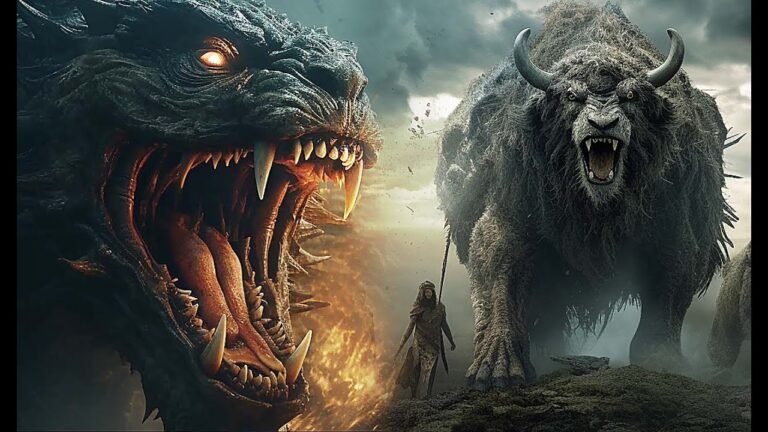Understanding the Behemoth: A Comprehensive Exploration
In the realm of mythology and literature, the term behemoth evokes images of an immense and powerful creature, often symbolizing overwhelming strength and magnitude. But what is the behemoth beyond its legendary status? This article delves into the origins and interpretations of this fascinating entity, exploring its significance in various cultures and its impact on contemporary discourse. Prepare to uncover the layers of meaning that surround this enigmatic symbol and its relevance in today’s world.
What does the term behemoth refer to in the Bible?
In the Old Testament, Behemoth is described as a formidable creature that embodies strength and might, with imagery that evokes its immense size and power: “his bones are tubes of bronze, his limbs like bars of iron” (Job 40:18). This majestic beast is often interpreted as a representation of God’s creative power and the wonders of the natural world, serving as a reminder of the divine order that governs all living things.
Beyond its depiction in scripture, Behemoth has inspired a wealth of Jewish legends, particularly the fascinating tale of its anticipated confrontation with Leviathan during the messianic era. This epic battle not only symbolizes the ultimate triumph of good over evil but also culminates in a grand feast for the righteous, who are promised a share in the extraordinary bounty of these legendary creatures. Such narratives enrich the theological and cultural fabric surrounding Behemoth, transforming it into a potent symbol of hope and divine promise.
What kind of animal is the behemoth?
The behemoth, a term steeped in mystery and often associated with ancient texts, is most commonly identified with the hippopotamus in contemporary discussions. In Russian, for instance, the word “begemot” predominantly refers to this large, semi-aquatic mammal, highlighting its significance in cultural interpretations of the behemoth. The hippopotamus embodies the traits of strength and enormity that align with the behemoth’s legendary stature.
However, the behemoth concept stretches beyond just the hippopotamus. Both the elephant and the water buffalo also emerge as potential candidates for this formidable creature. Each of these animals showcases impressive size and power, echoing the behemoth’s symbolic representation in literature and folklore. This versatility invites a broader understanding of what the behemoth might represent in various contexts.
Ultimately, the behemoth serves as a fascinating lens through which we can explore the natural world and its inhabitants. By examining the characteristics of the hippopotamus, elephant, and water buffalo, we uncover a deeper connection between myth and reality. These animals not only captivate our imagination but also remind us of the diverse forms that strength and majesty can take in the animal kingdom.
What are the Behemoth and Leviathan?
The Behemoth and Leviathan are two of the most fascinating creatures mentioned in ancient texts, often interpreted as symbolic representations of nature’s untamed power. The Behemoth, commonly associated with the hippopotamus, is described in the Book of Job as a colossal beast dwelling among the lotus plants by the riverbanks. This interpretation highlights the hippo’s formidable size and presence, instilling a sense of awe and fear in those who encounter it.
In contrast, the Leviathan is frequently identified with the crocodile, another formidable creature that commands respect in its natural habitat. The imagery surrounding the Leviathan evokes a sense of mystery and danger, as it represents the chaotic forces of the sea. Together, these creatures embody the duality of nature—one rooted in the lushness of the river and the other lurking within the depths of the waters.
Both the Behemoth and Leviathan serve as reminders of the awe-inspiring and sometimes terrifying aspects of the natural world. Through their vivid descriptions, these creatures invite reflection on humanity’s relationship with nature, emphasizing the need to respect and understand the powerful forces that exist beyond our control. Their enduring legacy continues to captivate the imagination and challenge our perceptions of the wild.
Unraveling the Myths Behind the Behemoth
The behemoth, often depicted as a colossal creature in various mythologies, has sparked fascination and fear throughout history. Traditionally associated with chaos and destruction, this enigmatic beast has been misinterpreted as a mere symbol of brute strength. In reality, the behemoth represents a complex interplay of nature’s power and humanity’s struggle to understand it. By unraveling the myths surrounding this legendary figure, we can appreciate its role as a metaphor for resilience, balance, and the need for harmony between mankind and the untamed forces of the world.
From Legends to Reality: The Behemoth Explained
Throughout history, the behemoth has captured the imagination of cultures around the world, often depicted as a colossal creature embodying strength and power. Rooted in ancient texts, particularly in the Bible, this legendary beast symbolizes untamed nature and the mysteries of the world. Scholars and enthusiasts alike have debated its origins, with interpretations ranging from a metaphor for divine creation to a representation of the primal forces that shape our existence. The behemoth serves as a reminder of humanity’s enduring fascination with the unknown and the grandeur of nature.
In contemporary discussions, the behemoth transcends its mythological roots, inspiring scientific inquiry and exploration. Researchers have sought to uncover the truth behind these legendary creatures, investigating the possibility that they may have been inspired by real animals, such as dinosaurs or large mammals that roamed the Earth. The blend of folklore and scientific discovery invites us to ponder the boundaries between reality and myth. As we delve deeper into the past, the behemoth continues to symbolize the intersection of imagination and understanding, challenging us to explore the wonders that lie beyond our comprehension.
A Deep Dive into the World of the Behemoth
In the vast expanse of mythology and folklore, the behemoth stands as a symbol of unimaginable strength and power. Often depicted as a colossal creature, it embodies the force of nature itself, stirring both fear and awe. This legendary figure has transcended cultures, appearing in ancient texts and modern interpretations alike. From its roots in biblical scripture to its portrayal in contemporary literature and art, the behemoth captivates the imagination, prompting us to explore themes of dominance and the struggle against overwhelming odds.
As we delve deeper into the world of the behemoth, we uncover layers of significance that resonate with our human experience. It serves as a reminder of the chaos that can emerge from unchecked power, urging us to confront our own limitations and vulnerabilities. The behemoth’s legacy invites reflection on the delicate balance between humanity and the forces that govern our existence. Whether as a metaphor for nature’s fury or a representation of our inner battles, the behemoth continues to inspire awe and contemplation, challenging us to grapple with the larger-than-life elements that shape our reality.
The Behemoth Uncovered: Facts and Fiction
The legend of the Behemoth has captivated imaginations for centuries, blending myth and reality into a single narrative steeped in intrigue. Often depicted as a colossal creature from ancient texts, the Behemoth is thought to symbolize the untamed forces of nature, embodying strength and chaos. Historical interpretations have ranged from a literal beast to a metaphor for humanity’s struggle against the overwhelming power of the natural world. This duality has sparked debates among scholars, fueling a rich tapestry of stories that traverse cultures and epochs.
Despite its mythical origins, modern interpretations of the Behemoth continue to evolve, reflecting contemporary concerns about environmental challenges and human resilience. Some see the creature as a cautionary figure, reminding us of the consequences of ecological neglect, while others celebrate it as a symbol of hope and regeneration. Whether rooted in ancient scripture or reimagined in modern literature, the Behemoth serves as a powerful reminder of our connection to nature and the enduring human spirit that seeks to understand and coexist with the mysteries of the world.
Decoding the Behemoth: Insights and Discoveries
In the realm of cryptozoology, few creatures have captured the imagination quite like the behemoth, a legendary entity often described as a colossal, powerful beast. Recent investigations have provided fascinating insights into its existence, blending folklore with scientific inquiry. Researchers have meticulously analyzed historical texts, eyewitness accounts, and environmental factors, leading to a deeper understanding of how such myths may have originated. These studies suggest that the behemoth could represent a conglomeration of various real animals, perhaps magnified by cultural storytelling, creating a compelling narrative that resonates across generations.
As scientists continue to decode the mysteries surrounding the behemoth, they are uncovering connections between ecological phenomena and the legends that surround them. Advances in technology, such as satellite imagery and genetic analysis, have opened new avenues for exploration, allowing researchers to track potential habitats and the species that might have inspired such tales. Ultimately, the quest to unravel the truth behind the behemoth not only enriches our understanding of mythical creatures but also encourages a greater appreciation for the natural world and the stories we share about it.
The behemoth represents more than just a mythical creature; it embodies the awe-inspiring power of nature and the mysteries that still elude human understanding. Its legacy, woven into the fabric of various cultures, invites us to ponder our place in the world and the forces that shape our existence. Exploring the behemoth not only ignites our imagination but also challenges us to embrace the unknown, reminding us that some wonders are meant to remain beyond our grasp.





